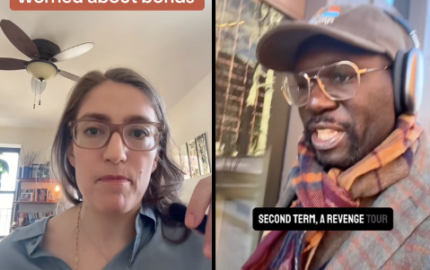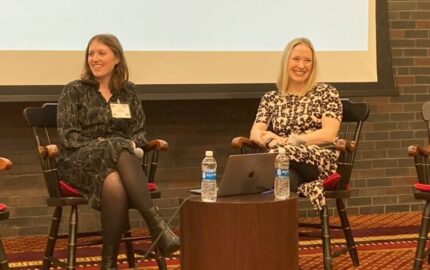Cohn notes that there is nevertheless no shortage of poetry. And it’s true that people are still writing it in droves—as witnessed by the overburdened submission box of at least one literary journal. Slam poetry competitions similarly flourish nationwide.
 In addition to serving as paired metaphors for irrevocable decline and financial struggle, however, poetry and journalism can work together in other ways. Poet/journalist James Fenton actually used earnings from his poetry to fund his reporting, which doesn't seem like a career path most of us could replicate. But sometimes poetry can be a more direct vehicle for narrative journalism.
In addition to serving as paired metaphors for irrevocable decline and financial struggle, however, poetry and journalism can work together in other ways. Poet/journalist James Fenton actually used earnings from his poetry to fund his reporting, which doesn't seem like a career path most of us could replicate. But sometimes poetry can be a more direct vehicle for narrative journalism.This week’s Notable Narrative, “Women of Troy” is an innovative multimedia collaboration between poet Susan B.A. Somers-Willett, photographer Brenda Ann Kenneally and radio producer Lu Olkowski. The project documents working-class women of Troy, N.Y., and narrates moments in the women’s lives, from a Flag Day parade to intimate domesticity. Delivering a more nuanced, and lively, picture of the working poor than we often get from journalists, the unusual combination of media helps us see with fresh eyes.
This project exists in this form because it was funded by Public Radio Maker’s Quest 2.0, an initiative of the Association of Independents in Radio. However, “Women of Troy” and “Congregation” (the second installment of the "In Verse" collaborations) have company. Olkowski pointed us to an experiment unlikely to figure in future news re-organizations, in which the Israeli newspaper Haaretz had poets and novelists cover the day’s events, including features, stock reports and TV reviews. In November, The New York Times also commissioned commemorative poetry for the 20-year anniversary of the fall of the Berlin Wall, including work from such luminaries as C.K. Williams.
Somers-Willett, who wrote the poems for “Women of Troy,” talked with us about the ways in which doing documentary poetry felt different to her:
“With this project, I was interviewing these women and writing about them, and I knew they would hear the product. I really needed to try to include everything and be accurate about what happened and in what order. I was working under the narrative constraints—or really, narrative boundaries—of the radio format, too.
I was trying to convey, say, in a poem about DJ Guerrin, that she’s a certain age and has seven kids, but only four of them live with her, while one is with her mom, and the other two live with their respective fathers. It’s very difficult to say all that in a compressed format such as poetry. You can say it in prose, where you have the space. In poetry you have to be really subtle about finding new and inventive ways to relay information.”
In an interview with Nieman Storyboard, Virginia Quarterly Review editor Ted Genoways mentioned Kwame Dawes’ site livehopelove.com, which chronicles life with HIV in Jamaica, as a powerful example of poetic collaboration for journalistic purposes. Olkowski similarly noted poet C.D. Wright’s work with photographer Deborah Luster on One Big Self: Prisoners of Louisiana.
These projects, along with the two installments of “In Verse” produced so far, show that it is possible for a tightly focused poem to embrace a very big picture, even a documentary one. Poetry seems unlikely to replace standard print narratives and even less likely to supplant the inverted pyramid, but its future and the future of news may be bound together at the margins. We are just beginning to imagine how both will evolve and the ways in which they might work together in narrative reporting.


